The Bald Eagle is one of the most iconic and majestic birds in North America. Renowned for its striking appearance, it has a powerful presence. Besides, this means that not all baby eagles are born with white feathers. To understand why a bald eagle gets white hair on its head, we need to look at its developmental stages, physical changes, and growth.

The Early Stages: Juvenile Bald Eagles
Bald Eagles begin life looking very different from their adult counterparts. When they hatch, they are covered in soft gray that gradually darkens as they grow. During the first year, these young birds are mostly dark brown, so they lack the recognizable white plumage of mature bald eagles. Their beaks and eyes are also darker, which is why they have less distinguished appearances.
Year One: The Dark Juvenile Phase
In their first year, juvenile bald eagles often resemble golden eagles because of their uniformly dark brown coloration. This stage is crucial because it is during this time that they develop vital hunting and flying skills for survival. Younger birds rely heavily on their parents during such periods.
You May Also Like: Small Southwestern Birds of Prey
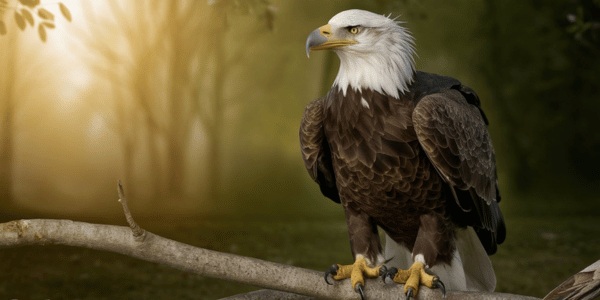
Transitioning to Adulthood: The Second and Third Years
Once bald eagles reach years two and three, subtle changes begin to occur. The dark brown feathers begin to show hints of white streaks, especially on the head and tail. This mottled appearance can make them look somewhat shabby and unkempt. Their beaks and eyes also start to lighten, gradually shifting towards the yellow coloration seen in adults.
Year Two: Mottling Begins
During the second year, the mottling becomes more pronounced. These changes significantly affect the eagle’s slow transition towards maturity. The feathers on the head, neck, and tail begin to exhibit more white patches, although the overall appearance remains predominantly brown.
Year Three: Increased White Feathers
By the third year, the white feathers become more noticeable, particularly on the head and tail. Despite all of this, the eagle still has much of its brown juvenile plumage and appears patchy and haphazard. This stage is halfway through the eagle’s journey to full adult plumage.
You May Also Like: Can Birds See At Night?
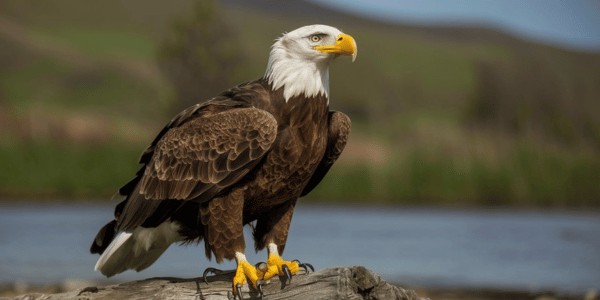
Approaching Maturity: The Fourth Year
This is a pivotal time for Bald Eagles’ lives. Within it, avifauna shows intense white coloring from skulls and tail tips on the scalps. Body cover becomes more uniform, too; however, darker browner and brownish feathers may be observed.
Year Four: The Near-Adult Appearance
At this stage, the Bald Eagle begins to resemble its adult form closely. The head and tail are predominantly white, although some brown streaks may still be visible. The beak and eyes have also reached their mature yellow coloration, making the eagle look more like the powerful predator it is destined to become.
You May Also Like: What are the Problems Faced by Birds?
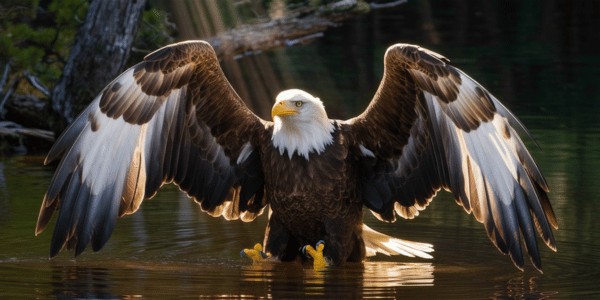
Full Maturity: The Fifth Year
Typically, by the time Bald Eagles reach their fifth year, they have already attained full adult plumage. The head and tail are brilliant white, contrasted with the dark brown body feathers. This striking difference in coloration is not just a matter of looks; it has social and mating implications.
Year Five: The Iconic White Head
Bald eagles are fully mature in their fifth year and are renowned for their stunning look. They have undergone extensive training and now possess all the physical attributes necessary for breeding and establishing territories. Bald eagles must have white heads as well as tails to attract mates and assert dominance.
You May Also Like: Small Southwestern Birds of Prey
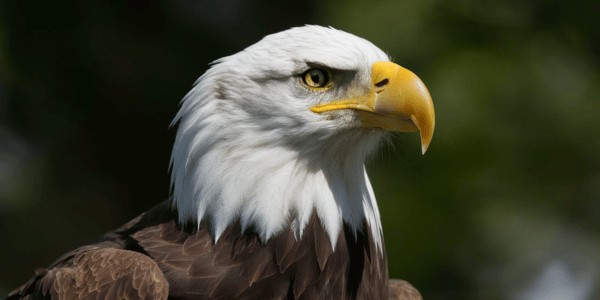
Factors Influencing Plumage Development
Several factors can influence the timing and extent of a Bald eagle’s Plumage development. Genetics, nutrition, and environmental conditions all play crucial roles in how quickly and thoroughly an eagle’s plumage transitions.
Genetic Variability
Genetic differences can cause variations in the age at which Bald Eagles develop their white head. Some eagles may achieve full adult plumage slightly earlier or later than the typical five-year timeframe.
Nutritional Impact
A Bald Eagle’s diet significantly affects its overall health and development. Eagles and juveniles with access to abundant and nutritious food sources are more likely to grow stronger and achieve full plumage faster than those with less optimal diets.
Environmental Conditions
Environmental factors such as weather, habitat quality, and human disturbance can also impact the rate of plumage development. Eagles in more stable and favorable environments may progress smoothly through their developmental stages.
You May Also Like: Birds of Prey: Meet the Mighty Raptors
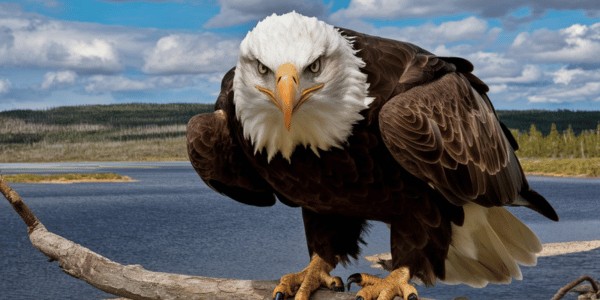
Significance of the White Head
The white head of a Bald Eagle serves several vital functions beyond mere identification. It plays a critical role in social behavior, mate selection, and territorial disputes.
Social Interactions and Hierarchy
Within eagle populations, the white head is a clear indicator of maturity and status. Adult eagles use their distinctive plumage to assert dominance and maintain social hierarchies. Younger eagles, still in their mottled phase, are often fully subordinate to mature adults.
Mate Attraction
A bright white head and tail feathers play a crucial role in mate selection. Eagles show off their fathers during courtship, indicating their readiness for mating.
Territorial Claims
Whitehead also helps in territorial disputes. Adult Bald Eagles, with their beautiful appearance, can scare rivals away and protect their nests. The contrast between the birds’ skin makes them more visible and recognizable to other eagles.
You May Also Like: The 21 Ugliest Birds: Nature’s Strange Creations
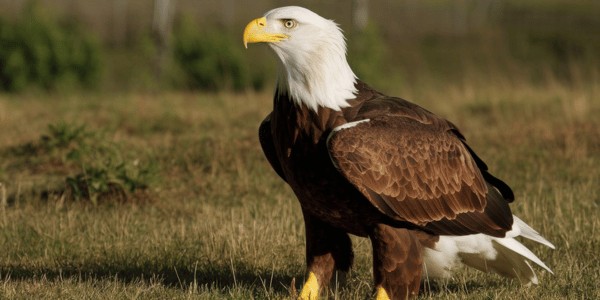
Observing Bald Eagles in the Wild
Bald Eagle’s developmental stages can be understood better by birders and nature lovers who want to enjoy watching these beautiful birds. Seeing how a dark juvenile turns into an adult one with a majestic look is among the most amazing things about nature.
Critical Locations for Bald Eagle Watching
Some of the best places where you can see Bald Eagles in America include:
- Alaska: Alaska boasts the largest population of this bird, particularly along the Chilkat River and around Glacier Bay.
- Florida: The state is known for having a large wintering population, including areas such as the Everglades, which are close to big lakes.
- Pacific Northwest: Washington State and Oregon provide ample opportunities, such as the Columbia River area or Puget Sound region.
Seasonal Viewing Opportunities
To observe bald eagles varies across locations, some of which might be;
In Northern regions, winter months provide excellent opportunities when water bodies remain unfrozen and become gathering points for hunting eagles. In contrast, spring and early summer mark the breeding season that offers perfect nesting viewings and courtship displays of eagles.
Conclusion: When Does A Bald Eagle Get A White Head?
Understanding when a bald eagle gets a white head means understanding its complex growth process. From brown-speckled juveniles to full-grown white-topped adults, significant changes are showing how adaptable these raptors eagle’s whitehead on an eagle’s neck signifies not only God’s but also proof of God’s intricate design for his creation on earth; this should not go unnoticed if we want our eyes opened to wonders around us. Knowing these stages will help someone better understand the journey of these birds and their place in our natural world.
FAQ: When Does A Bald Eagle Get A White Head?
1. At what age does a Bald Eagle get a white head?
Bald Eagles typically develop their iconic white head and tail feathers by the time they reach their fifth year.
2. What does a juvenile black Eagle look like?
Juvenile bald eagles are generally dark brown with darker beaks and eyes than adults, and they lack the familiar white plumage.
3. How does the plumage of a Bald Eagle change over the years?
- Year 1: Dark brown, resembling Golden Eagles.
- Year 2: Start showing white streaks on the head and tail.
- Year 3: Increased white feathers, but still primarily brown.
- Year 4: Predominantly white head and tail with some brown streaks.
- Year 5: Fully mature with a brilliant white head and tail.
4. What factors influence the development of a Bald Eagle’s white head?
The development can be influenced by genetics, nutrition, and environmental conditions.
5. Why is the white head s gnificant for Bald Eagles?
The white head serves essential roles in social interactions, mate attraction, and territorial claims.
6. Where are the best places to observe Bald Eagles?
- Alaska: Chilkat River, Glacier Bay
- Florida: Everglades, large lakes
- Pacific Northwest: Columbia River, Puget Sound
7. When is the best time to observe Bald Eagles?
Winter months in northern regions are for hunting behaviors, and spring to early summer is during the breedineagles’ season.
8. Do all bald eagles turn white at the same eagles
No, while most bald eagles’ heads turn white between 4 and 5 years of age, the exact timing can vary based on environmental and genetic factors.
9. Can you tell the age o and eagle by its head color?
Yes, juvenile bald eagles have brown heads, which gradually turn white as they reach maturity around four years old.
10. Do bald eagles’ heads are white for both males and females?
Yes, both male and female bald eagles develop white heads as they mature.
11. Aren’t any bald eagles that don’t get white heads?
There are no matured American Bald Eagles without a changed coloration on their heads, although the timing might differ slightly between individuals.
12. How can you differentiate a juvenile bald eagle from an adult?
While adults have distinctively darkened bodies, bright tail plumage, and a snowy crown at the top of their skulls, juveniles are mostly brown in appearance with spotty whiteness.







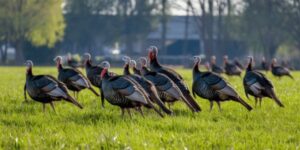




One Response